I wrote a book several years ago about police and military motorcycles, and I receive some interesting emails as a result. Back in the 1990s, one of those emails was from Captain Jose Paredes Desiderio, who at that time headed Ecuador’s presidential motorcycle escort unit. Capitano Paredes sent this narrative and these great photos to me and I want to share them with you. The photos are awesome, especially the ones from the old days. The translation came from Google with a few minor tweaks by me. Captain Paredes, thank you very much!
My name is Jose Paredes Desiderio and I work in the Transit Commission of Guayas province (we are traffic police in the province of Guayas). I have the rank of captain and I am head of the Department of the Presidential Escort. I saw pictures of the motorcycle riders who have used different motorcycles of different brands worldwide and I am sending some photos to have so that you can know that my country ECUADOR has also used different brands of motorcycles. Here is a short history of the institution to which I belong.
The Transit Commission of Guayas Province purchased its first motorcycle for traffic control within the Province of Guayas.
 You can see how the public admire Guayasense, a motorcyclist and Lord of the Transit Commission of Guayas Province at that time.
You can see how the public admire Guayasense, a motorcyclist and Lord of the Transit Commission of Guayas Province at that time.
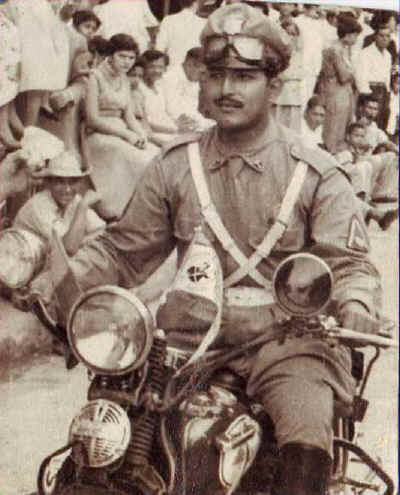 During the beginning 50 years, the Presidential Escort was established with the primary mission of escorting and providing security to the President and Vice-President of the Republic. They lit the alarm sirens, lights flashing resplendent in their motorcycles. The seated gentlemen guards were ordered in strategic caravans taking custody of the Presidential car with professionalism and responsibility.
During the beginning 50 years, the Presidential Escort was established with the primary mission of escorting and providing security to the President and Vice-President of the Republic. They lit the alarm sirens, lights flashing resplendent in their motorcycles. The seated gentlemen guards were ordered in strategic caravans taking custody of the Presidential car with professionalism and responsibility.
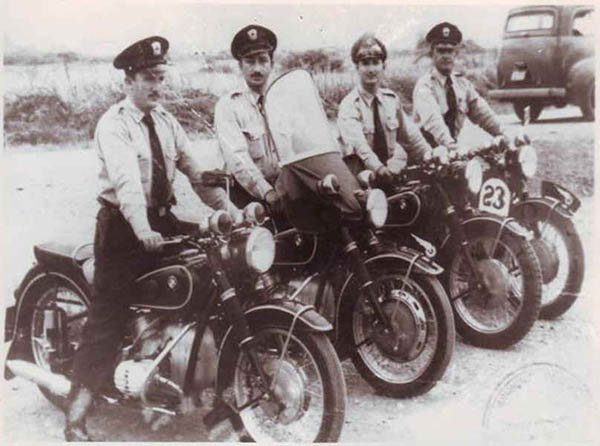 We appreciate the members of the Presidential Escort’s professionalism and accountability. Here they are with His Excellency, Mr. President of the Republic of Ecuador, Dr. Jose Maria Velasco Ibarra.
We appreciate the members of the Presidential Escort’s professionalism and accountability. Here they are with His Excellency, Mr. President of the Republic of Ecuador, Dr. Jose Maria Velasco Ibarra.
 Here we can see Vigilante Vicente Alvarado doing acrobatics and practicing on his motorized vehicle (motorcycle) at the start of the Training School of Presidential Escort.
Here we can see Vigilante Vicente Alvarado doing acrobatics and practicing on his motorized vehicle (motorcycle) at the start of the Training School of Presidential Escort.
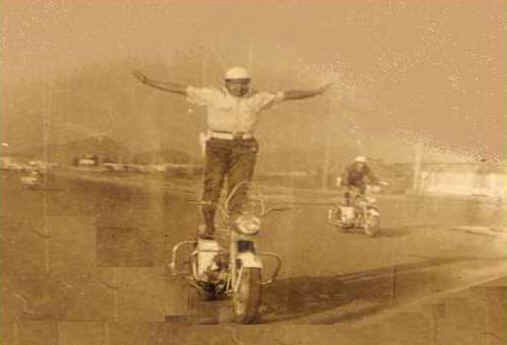 In the 80 years of its existence the Transit Commission has renewed its fleet by acquiring brand new 750 cc Suzuki motorcycles, which were used for the Presidential Escort. Here we see Mr. Transit Chief Mayor Jorge Peñafiel Ball, and Mr. Sub Chief Transit Mayor Carlos Palacios Torres.
In the 80 years of its existence the Transit Commission has renewed its fleet by acquiring brand new 750 cc Suzuki motorcycles, which were used for the Presidential Escort. Here we see Mr. Transit Chief Mayor Jorge Peñafiel Ball, and Mr. Sub Chief Transit Mayor Carlos Palacios Torres.
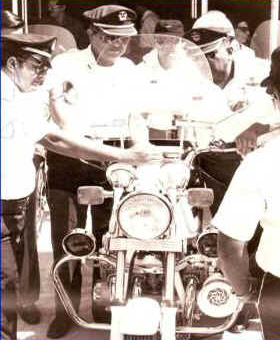
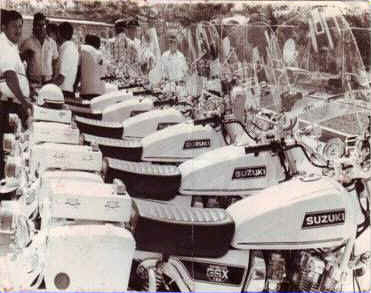 In the 1990s, the leading institution for transit renewed its fleet by acquiring 750 cc Honda motorcycles.
In the 1990s, the leading institution for transit renewed its fleet by acquiring 750 cc Honda motorcycles.
 In gratitude for the performance of motorcyclists who were part of the Presidential Escort, the department received Harley Davidson Motorcycles.
In gratitude for the performance of motorcyclists who were part of the Presidential Escort, the department received Harley Davidson Motorcycles.
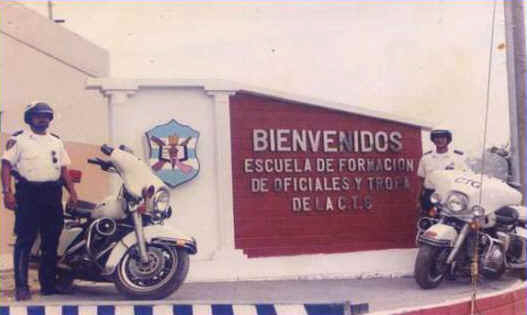 Festivities in Juliana’s staff. Here is 92 years of motorcycle experience in the Presidential Escort to the President of the Republic Arch Sixto Durán Ballén, from left to right subway. Miguel Leon Czech Subway. Miguel Rosero Huacón, Sgt. Ely Lopez Duran and subway. José Paredes Desiderio (current head of the Department Presidential Escort).
Festivities in Juliana’s staff. Here is 92 years of motorcycle experience in the Presidential Escort to the President of the Republic Arch Sixto Durán Ballén, from left to right subway. Miguel Leon Czech Subway. Miguel Rosero Huacón, Sgt. Ely Lopez Duran and subway. José Paredes Desiderio (current head of the Department Presidential Escort).
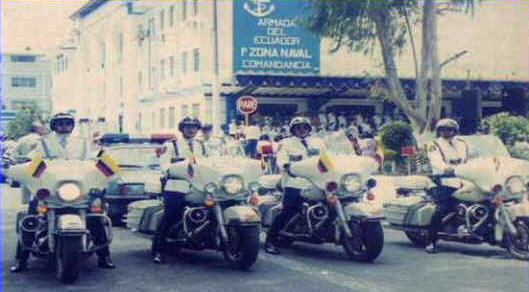 In 2004, the Transit Commission of Guayas Province acquires new motorcycles for the department of the Presidential Escort. These are the 1150 cc BMW brand.
In 2004, the Transit Commission of Guayas Province acquires new motorcycles for the department of the Presidential Escort. These are the 1150 cc BMW brand.
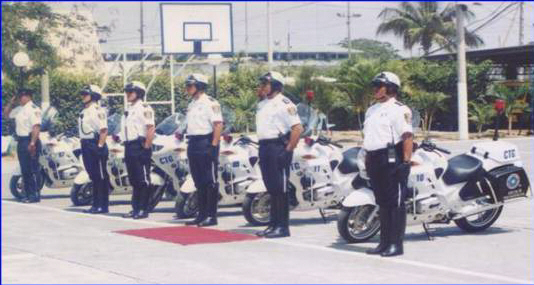 The Escort also received Suzuki Motorcycles of 500cc, which were acquired together with the BMW for the Department of the Presidential Escort CTG.
The Escort also received Suzuki Motorcycles of 500cc, which were acquired together with the BMW for the Department of the Presidential Escort CTG.
 Here are Motorcyclists who took part in the caravan escorting Mr. Former President of the USA George Bush during his visit to the city of Guayaquil.
Here are Motorcyclists who took part in the caravan escorting Mr. Former President of the USA George Bush during his visit to the city of Guayaquil.
 Here is the Head of Department (Cap. Jose Paredes Desiderio) planning with the class officers and gentlemen vigilant routes before a shift is going to escort some of the important people who visit the city of Guayaquil and Guayas Province.
Here is the Head of Department (Cap. Jose Paredes Desiderio) planning with the class officers and gentlemen vigilant routes before a shift is going to escort some of the important people who visit the city of Guayaquil and Guayas Province.
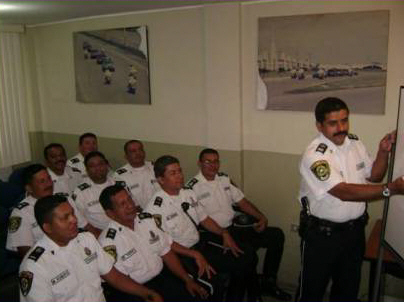 This is the Staff of the Presidential Escort doing acrobatics on BMW motorcycles.
This is the Staff of the Presidential Escort doing acrobatics on BMW motorcycles.
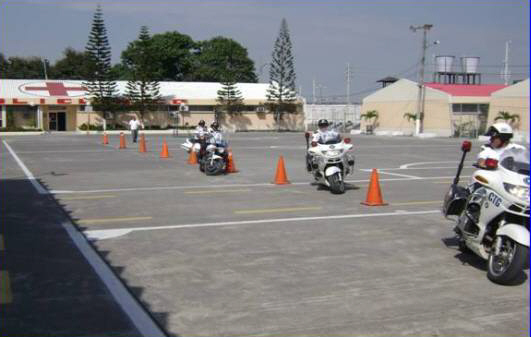
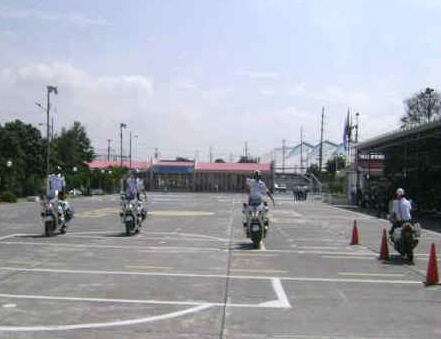 Like any other institution in the country and the world, women now form part of this great institution in the GUAYAS transit Commission. These beautiful and distinguished ladies who have the mystique and taste for wearing a uniform have the ability and skill to drive a motor vehicle, which has led them to join the select group of the Presidential Escort of the Province of Guayas.
Like any other institution in the country and the world, women now form part of this great institution in the GUAYAS transit Commission. These beautiful and distinguished ladies who have the mystique and taste for wearing a uniform have the ability and skill to drive a motor vehicle, which has led them to join the select group of the Presidential Escort of the Province of Guayas.

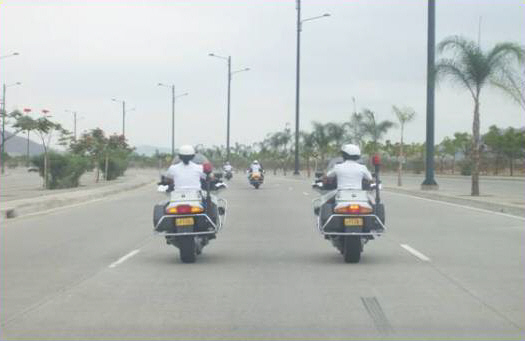 At present I am trying to communicate with police elsewhere in the world who are interested in training with modern techniques and exchange knowledge. We ask them to share their his knowledge by writing to my mail (jparedesd@ctg.gov.ec). If any groups use Harley Davidson, BMW, Honda, Suzuki, etc. and would like to educate two members of this institution which I represent I ask you to contact me.
At present I am trying to communicate with police elsewhere in the world who are interested in training with modern techniques and exchange knowledge. We ask them to share their his knowledge by writing to my mail (jparedesd@ctg.gov.ec). If any groups use Harley Davidson, BMW, Honda, Suzuki, etc. and would like to educate two members of this institution which I represent I ask you to contact me.
Wow, that’s quite a letter, and quite an impressive collection of vintage police motorcycle photographs. Captain Paredes, thanks again!

 Motorcycles and things related to them are interesting..the bikes themselves, the people, the events, and more, so it was with some interest that Sue and I noticed a small piece in our local newspaper about a motorcycle show in nearby Chaffey College. Faster, Faster! The Art of Motorcycle Culture was the name of the show, and that sounded like it might be fun. Not having anything pressing to do, we decided to ride over and see it. I had my Nikon, thinking that the show might have some interesting motorcycles worthy of a photo or two.
Motorcycles and things related to them are interesting..the bikes themselves, the people, the events, and more, so it was with some interest that Sue and I noticed a small piece in our local newspaper about a motorcycle show in nearby Chaffey College. Faster, Faster! The Art of Motorcycle Culture was the name of the show, and that sounded like it might be fun. Not having anything pressing to do, we decided to ride over and see it. I had my Nikon, thinking that the show might have some interesting motorcycles worthy of a photo or two.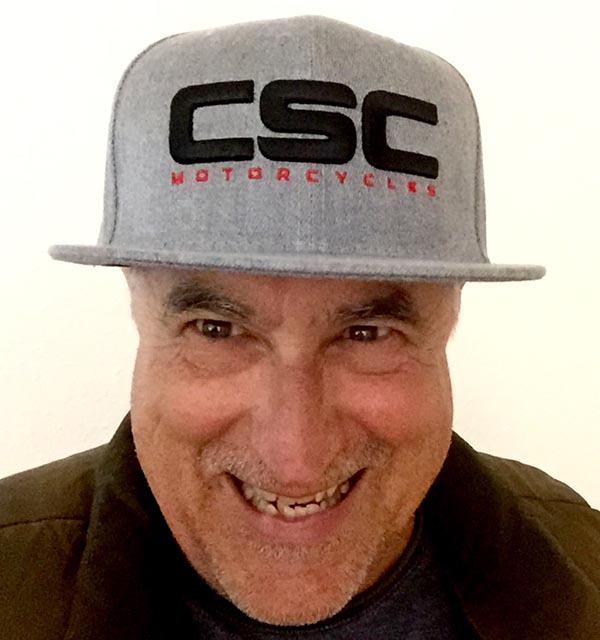 I didn’t start out in the typing business looking for swag. I was more interested in seeing my byline on a real, printed object. Being published meant at least one person in the world thought my stuff wasn’t terrible. No, it was like more swag found me. Slowly at first, then faster as the typing game became less and less lucrative, swag has grown ever larger in importance.
I didn’t start out in the typing business looking for swag. I was more interested in seeing my byline on a real, printed object. Being published meant at least one person in the world thought my stuff wasn’t terrible. No, it was like more swag found me. Slowly at first, then faster as the typing game became less and less lucrative, swag has grown ever larger in importance.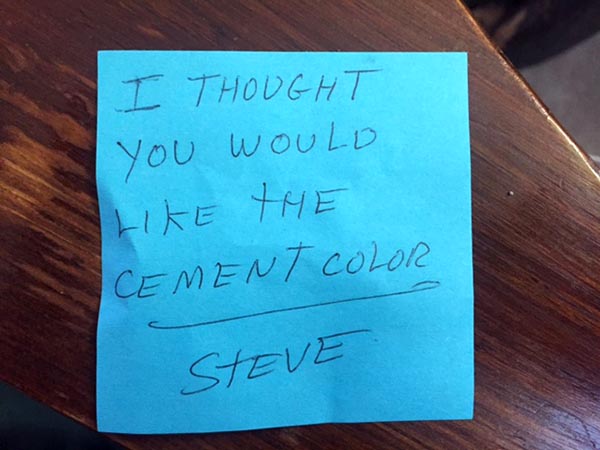 CSC sent me a flat-brimmed swag cap. They didn’t need to: I love those guys and how their business plan is a fantastic experiment in mail order motorcycling. I like that the customer needs to be a bit more self sufficient to operate their motorcycles. And I like the hat. With most products becoming sealed off to us regulars, CSC bikes actually require you to dig in. Since I own mostly weird motorcycles that have no dealer support I relate to the pride a CSC owner feels when he sets his own valves or replaces the chain and sprockets on his motorcycle.
CSC sent me a flat-brimmed swag cap. They didn’t need to: I love those guys and how their business plan is a fantastic experiment in mail order motorcycling. I like that the customer needs to be a bit more self sufficient to operate their motorcycles. And I like the hat. With most products becoming sealed off to us regulars, CSC bikes actually require you to dig in. Since I own mostly weird motorcycles that have no dealer support I relate to the pride a CSC owner feels when he sets his own valves or replaces the chain and sprockets on his motorcycle. Swag works. The preceding paragraph should be all the proof you need. Swag turns customers into advocates and a scuba suit beer cooler celebrating Pandya’s 50th birthday will always come in handy. Come to think of it, Exhaustnotes.us has no swag that I’m aware of. I’ll have to get to work on that.
Swag works. The preceding paragraph should be all the proof you need. Swag turns customers into advocates and a scuba suit beer cooler celebrating Pandya’s 50th birthday will always come in handy. Come to think of it, Exhaustnotes.us has no swag that I’m aware of. I’ll have to get to work on that.
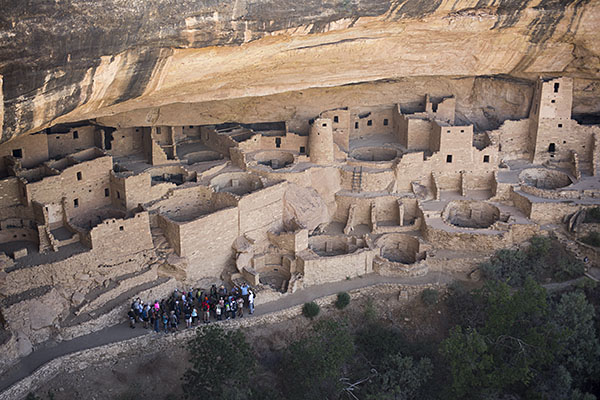
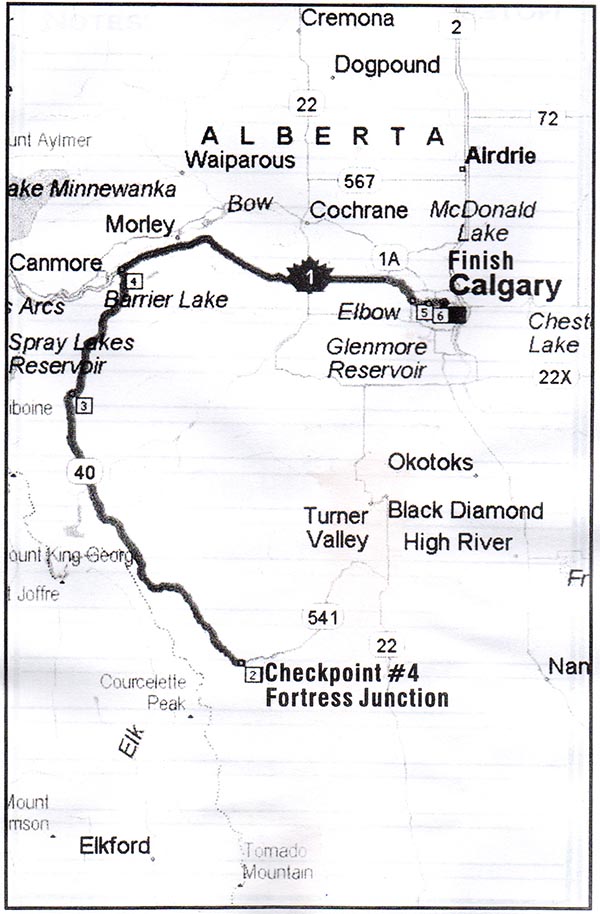

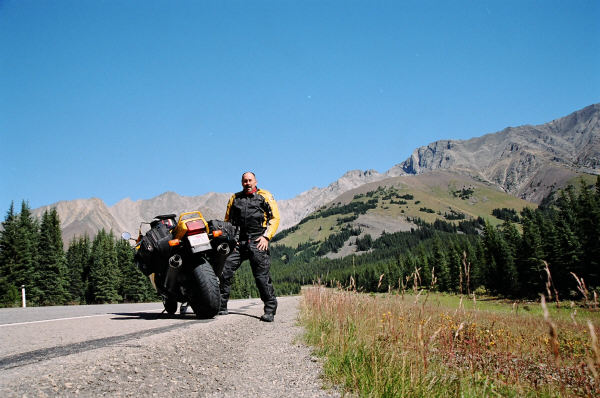
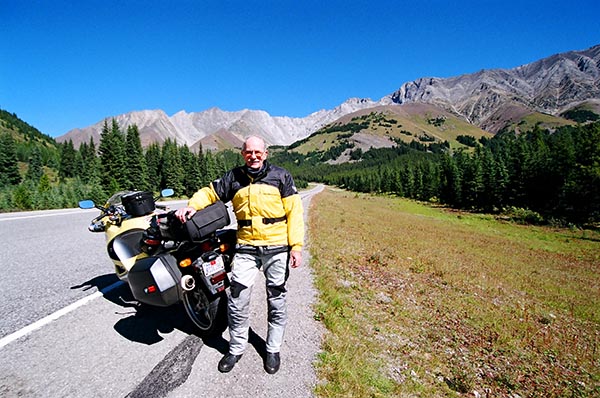
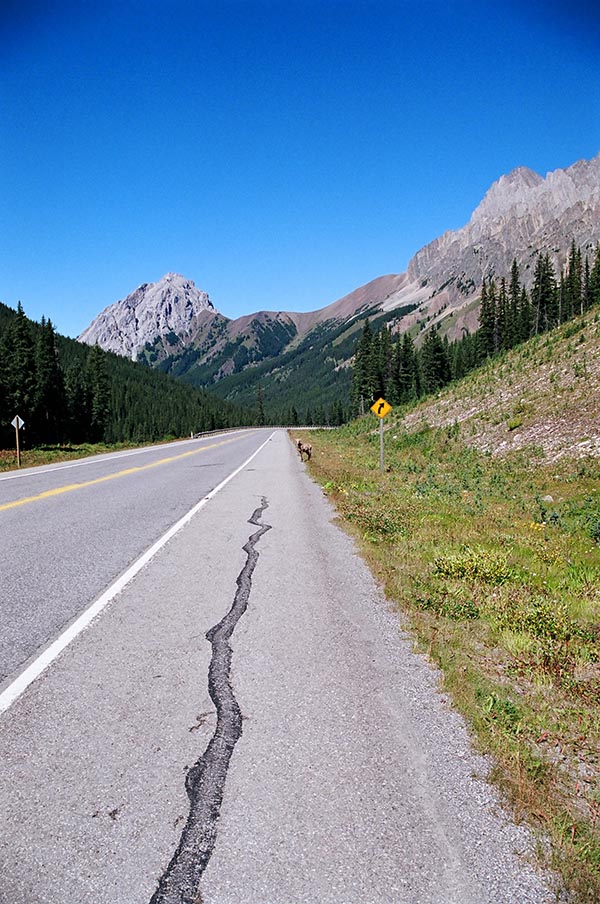
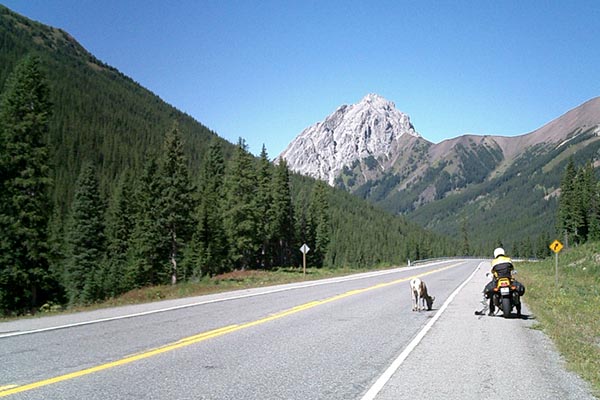
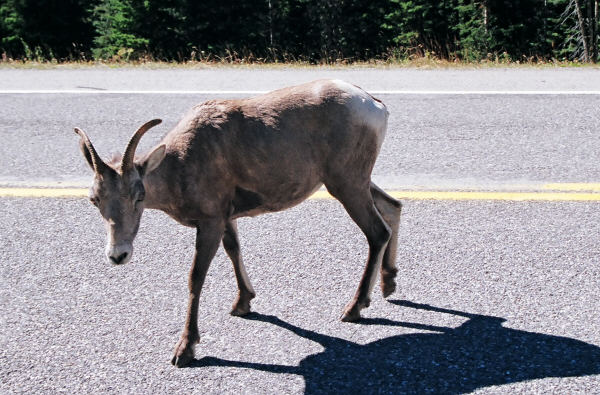
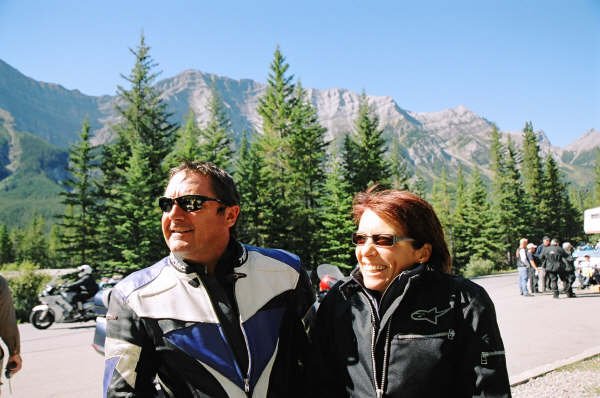
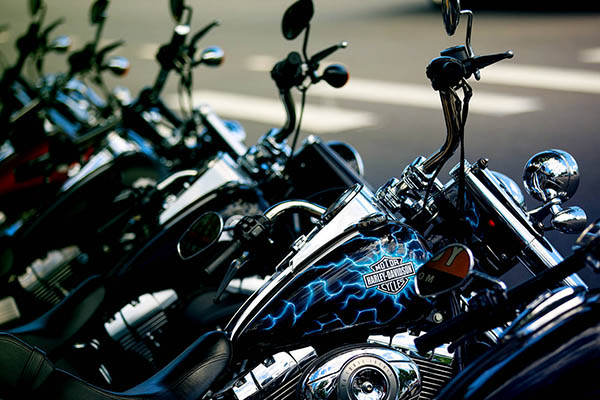 I guess more financial mags are zeroing in on Harley-Davidson’s plans to introduce an electric motorcycle. You saw our post a week or so ago about The Motley Fool and their thoughts on the Livewire. Barron’s, another financial newspaper/advisory service, similarly reported on Harley’s woes but with a twist.
I guess more financial mags are zeroing in on Harley-Davidson’s plans to introduce an electric motorcycle. You saw our post a week or so ago about The Motley Fool and their thoughts on the Livewire. Barron’s, another financial newspaper/advisory service, similarly reported on Harley’s woes but with a twist. 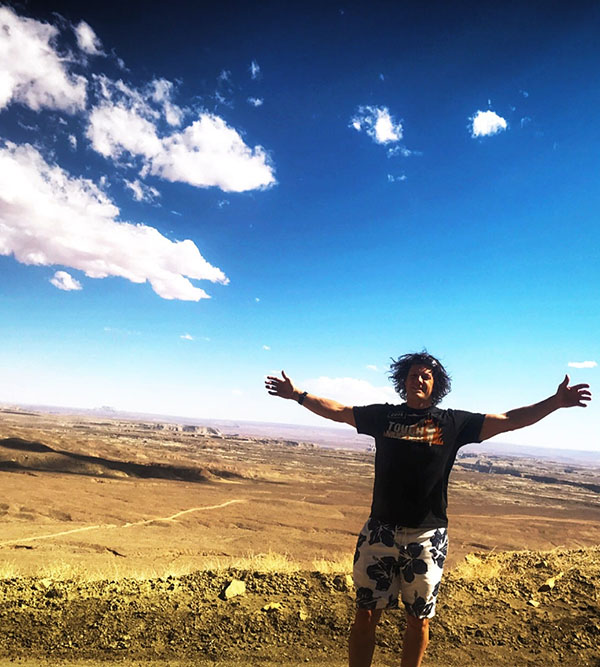

 As I developed my passion for moto camping I began following blogs and Facebook groups to seek out tips and tricks that can make my moto camping experiences more exciting and comfortable. I began to notice that some moto campers on these pages camped in their hammocks full time and didn’t even own a tent. This awoke my curiosity since I always travel with an ENO double nest nylon hammock. On most nights when I camp I usually hang the hammock when I have a few hours to kill where I can get comfortable and read a book or just gaze into the campfire after a long day of riding. Even though I travel and use a hammock frequently I never thought of sleeping in my hammock while camping prior to reading these blogs.
As I developed my passion for moto camping I began following blogs and Facebook groups to seek out tips and tricks that can make my moto camping experiences more exciting and comfortable. I began to notice that some moto campers on these pages camped in their hammocks full time and didn’t even own a tent. This awoke my curiosity since I always travel with an ENO double nest nylon hammock. On most nights when I camp I usually hang the hammock when I have a few hours to kill where I can get comfortable and read a book or just gaze into the campfire after a long day of riding. Even though I travel and use a hammock frequently I never thought of sleeping in my hammock while camping prior to reading these blogs.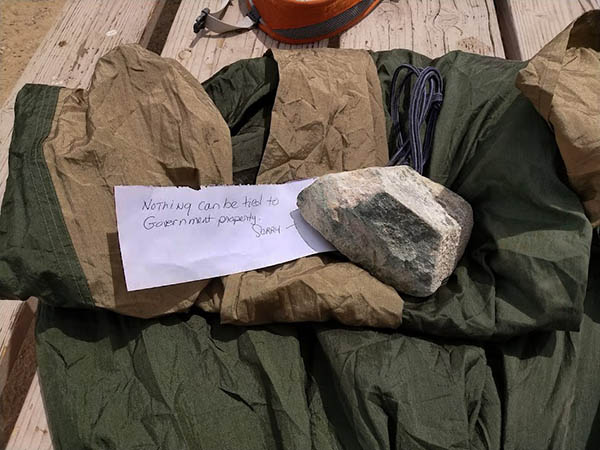 I enjoy the unique experience of hammock camping and whenever conditions are right have continued to camp in my hammock. I am now in the habit of setting up both my tent and hammock at my campsites and go with how I feel, the weather, and my surroundings. Hammock camping is another option to have, and with moto camping having more options is never a bad thing.
I enjoy the unique experience of hammock camping and whenever conditions are right have continued to camp in my hammock. I am now in the habit of setting up both my tent and hammock at my campsites and go with how I feel, the weather, and my surroundings. Hammock camping is another option to have, and with moto camping having more options is never a bad thing. And there you have it. No doubt there are more highly-charged comments posted by the time you read this. I stopped reading them and posting responses because I thought I might offend someone, or maybe even be offended myself. But then, I always have had a short fuse…
And there you have it. No doubt there are more highly-charged comments posted by the time you read this. I stopped reading them and posting responses because I thought I might offend someone, or maybe even be offended myself. But then, I always have had a short fuse…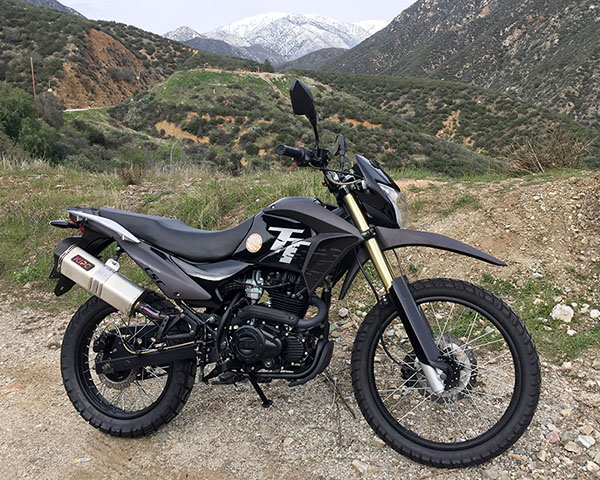
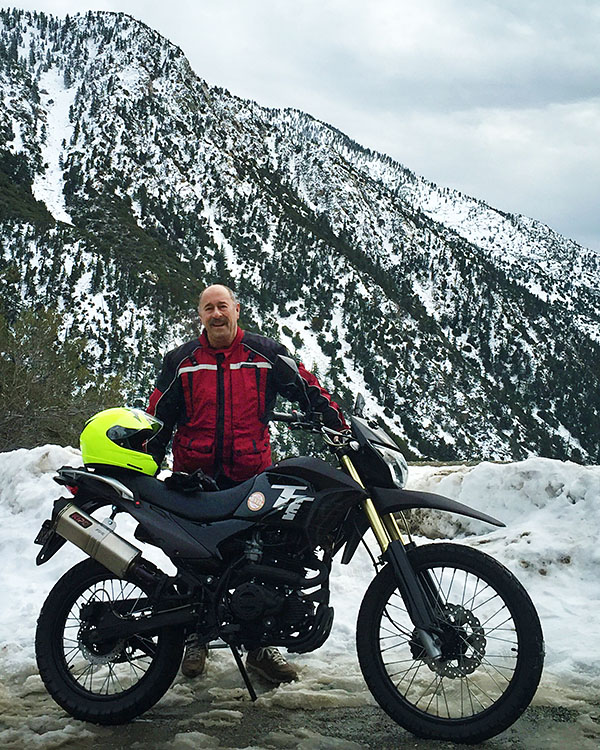
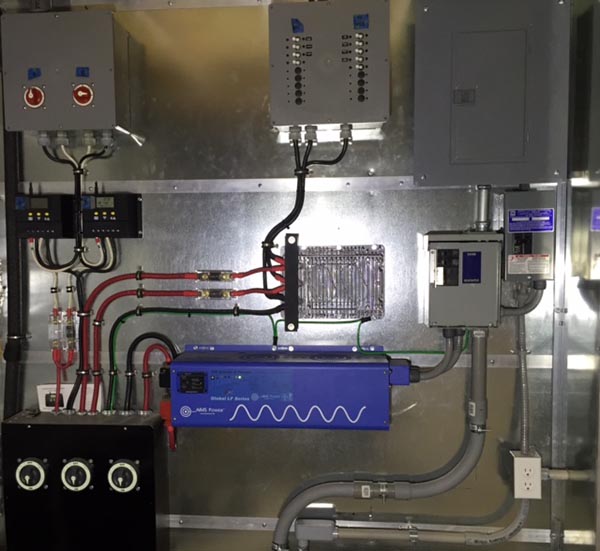 Unlike motorcycles, I’m not fixated on doing things the old way for electrical energy storage. I run a
Unlike motorcycles, I’m not fixated on doing things the old way for electrical energy storage. I run a  Battery technology is advancing rapidly with so many new combinations of lithium with something else, molten salt or rare elements only found in war torn areas. It’s hard to know which technology will win out in the end but for now, in my solar-powered shed system, lead-acid still offers the best electron storage option.
Battery technology is advancing rapidly with so many new combinations of lithium with something else, molten salt or rare elements only found in war torn areas. It’s hard to know which technology will win out in the end but for now, in my solar-powered shed system, lead-acid still offers the best electron storage option. Lead-acid batteries are easily scalable and nearly any voltage or amperage desired can be achieved with large, simple jumper cables. I’m running 4, group 31, 12-volt batteries in my 24-volt system. My future plans are for 16 batteries total but there’s no rush. I can take as long as I want to get there or 8 batteries might prove to be enough for my usage level.
Lead-acid batteries are easily scalable and nearly any voltage or amperage desired can be achieved with large, simple jumper cables. I’m running 4, group 31, 12-volt batteries in my 24-volt system. My future plans are for 16 batteries total but there’s no rush. I can take as long as I want to get there or 8 batteries might prove to be enough for my usage level.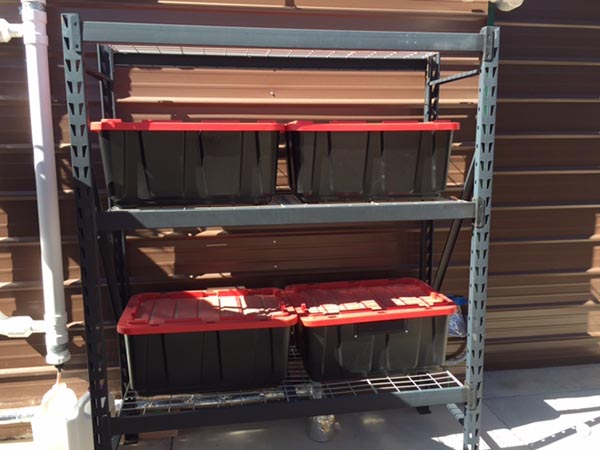 Most important for me: They are cheap! The four deep cycle marine batteries in my off-grid system @100 amp/hour each give me a total of 2400 watts of storage (@ 50% capacity) for 400 dollars. If I ever get to 16 batteries I’ll have 9600 watts of storage for around 1600 dollars. Compare that to 7000 dollars for 7000 watts of storage from Tesla’s Powerwall.
Most important for me: They are cheap! The four deep cycle marine batteries in my off-grid system @100 amp/hour each give me a total of 2400 watts of storage (@ 50% capacity) for 400 dollars. If I ever get to 16 batteries I’ll have 9600 watts of storage for around 1600 dollars. Compare that to 7000 dollars for 7000 watts of storage from Tesla’s Powerwall. I’m not a Luddite when it comes to battery technology on motorcycles or power tools but for me the new designs and materials haven’t yet made sense for large, stationary storage banks at low cost. I’ll revisit the topic if Tesla reduces the price of their Powerwall by half or some new manufacturer comes up with a wiz bang combination of chemicals that outdoes ancient lead acid technology.
I’m not a Luddite when it comes to battery technology on motorcycles or power tools but for me the new designs and materials haven’t yet made sense for large, stationary storage banks at low cost. I’ll revisit the topic if Tesla reduces the price of their Powerwall by half or some new manufacturer comes up with a wiz bang combination of chemicals that outdoes ancient lead acid technology.